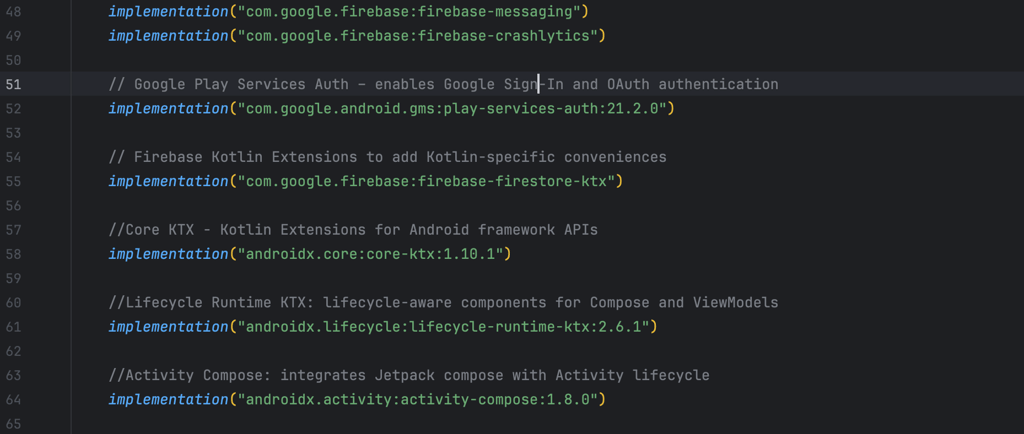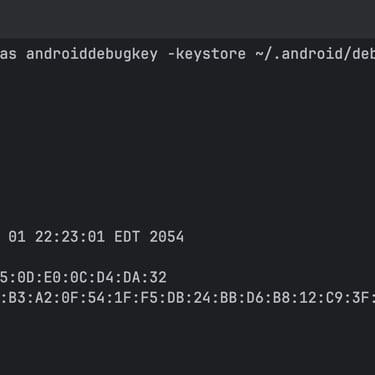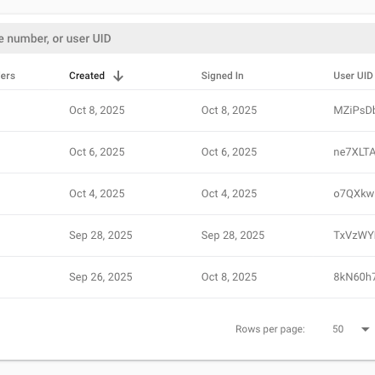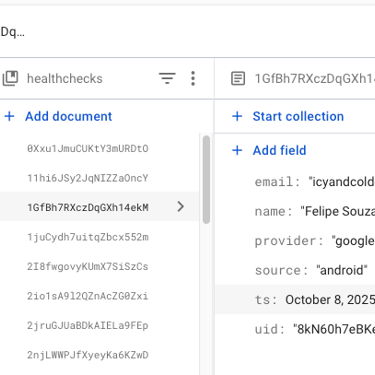Progress and Integration: Sprint 2 Review and Sprint 3 Outlook
WEEK 6
Felipe de Souza
10/12/2025


This week was both productive and challenging as I worked on completing my assigned Sprint 2 tasks and preparing the groundwork for Sprint 3. My main focus was on implementing and testing the Firebase Google Sign-In integration, which included four key subtasks:
OPS-30: Integrate Firebase SDK into the project
OPS-31: Configure Google Sign-In in Firebase Console
OPS-33: Handle Google Sign-In authentication flow
OPS-34: Test Google Sign-In integration
After some trial and error, I successfully connected our Android project to Firebase’s authentication system and confirmed the integration was functioning as intended. Seeing my name and UID populate in Firestore during testing felt like a big accomplishment—it was the confirmation that the backend was finally talking to Firebase exactly as intended.
Challenges Faced and Overcome
Despite the successful outcome, this week came with its share of difficulties. Initially, I struggled to determine where to begin implementing the authentication logic because our UI screens weren’t yet merged into the main development branch. Without those front-end components, it was tricky to visualize how my backend logic would tie into the user interface.
However, after a team merge meeting, we decided it would be best for me to hold off merging my branch until I could implement my backend logic directly into the finalized UI screens. This ensures cleaner integration, fewer merge conflicts, and more accurate testing once those screens are ready. It also reinforced the importance of clear communication and coordination during multi-branch development.
Revisiting SHA Keys and Secure Authentication
To implement Google Sign-In, I revisited my earlier research on SHA-1 and SHA-256 certificates and how they enable secure authentication between Android and Firebase. These keys act as digital fingerprints, verifying that requests to Firebase come from our verified app instance.
Using the keytool command once again, I generated both keys on my Mac terminal:
keytool -list -v -alias androiddebugkey -keystore ~/.android/debug.keystore -storepass android -keypass android
The output displayed both SHA-1 and SHA-256 fingerprints, which I added to the Firebase console. This step was essential to enable Google Sign-In authentication and to register our app’s signature with Firebase’s backend for secure communication.
Balancing Outside Commitments
Outside of the Capstone project, this week demanded significant time management on my part. Alongside my Historical Archetypes and Mythology course—which continues to be heavy on reading and writing—I was also responsible for overseeing the reopening of one of my Dunkin’ stores following a full remodel.
The reopening date, set for October 11, required hands-on work: deep cleaning, organizing, retraining team members, redeploying equipment, and ensuring everything was ready for launch. Balancing this with development deadlines and my mythology assignments tested my endurance and scheduling discipline. However, it also served as a reminder that leadership, organization, and communication are transferable skills that benefit both my career and my software development journey.
Reflection
This sprint tested both my patience and persistence. The authentication flow was complex, and coordinating timing with team UI updates made things more delicate. But in the end, these challenges improved my understanding of Firebase’s security layer, my grasp of how backend and frontend must align for clean integration, and my ability to adapt under pressure—whether in code, coursework, or managing a store reopening.
Gallery




Explore
Discover my journey as a software engineer.
© 2025. All rights reserved.